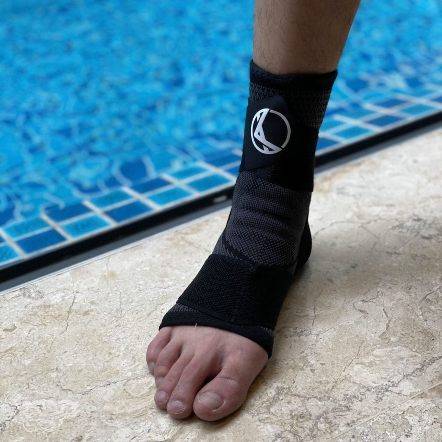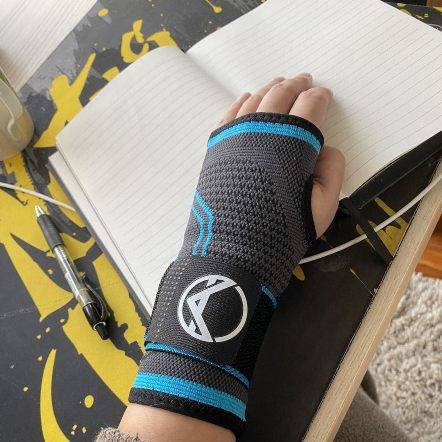
November 28, 2023 | 3 Mins Read
TABLE OF CONTENTS
Carpal tunnel surgery is a crucial intervention for those suffering from carpal tunnel syndrome, a condition characterized by pain, numbness, and tingling in the hand and arm. The surgery aims to alleviate these symptoms by relieving pressure on the median nerve in the wrist.
However, the effectiveness of this procedure heavily relies on post-operative care and adherence to specific restrictions. This article delves into the necessary precautions and lifestyle adjustments required after carpal tunnel surgery, ensuring a smooth and efficient recovery.

Carpal tunnel release surgery, typically considered a last-resort treatment for carpal tunnel syndrome, involves making a small incision in the wrist to cut the transverse carpal ligament, thus relieving pressure on the median nerve. This procedure, usually performed under local anesthesia, can be done using open or endoscopic techniques, with the latter potentially offering quicker recovery. Chosen after other treatments like splinting or medication fail, its success hinges on timely intervention and proper post-operative care, including wrist elevation and gradual resumption of activities.
After carpal tunnel surgery, it is essential to prioritize rest and proper wound care. Your hand will likely be bandaged and immobilized with a splint or wrist compression sleeve. The following are some necessary precautions for the first few days after surgery:
The initial 24 hours following carpal tunnel surgery are critical for setting the stage for effective healing. Patients need to follow specific guidelines to ensure the best outcomes:
Adhering to these dos and don'ts on the first day after surgery is vital for reducing the risk of complications and promoting a smooth healing process.
It is crucial to understand and adhere to specific activity restrictions after carpal tunnel surgery. These limitations are put in place to allow the surgical site to heal properly and prevent any movements that may hinder recovery. The following are some common activity restrictions after carpal tunnel surgery:
A key aspect of recovery is managing physical activities. Patients must refrain from lifting heavy objects or engaging in strenuous exercises for several weeks post-surgery. Light activities like walking are encouraged, but any exercise that puts strain on the wrist should be avoided until full recovery.
A gradual reintroduction to physical activities is essential. Light weightlifting may be permissible several weeks after surgery, but only under medical guidance. High-impact exercises should be resumed more slowly to avoid stressing the wrist.
Resuming household activities should be gradual. Tasks that strain the wrist, such as wringing out laundry or heavy lifting, must be avoided. Using the unoperated hand for such tasks is advisable during the recovery period.

Work restrictions may be necessary after carpal tunnel surgery, particularly for those in occupations that involve repetitive hand movements or heavy lifting. Here are some considerations for returning to work after carpal tunnel surgery:
For office workers, especially those who regularly use computers, making ergonomic adjustments to their workstations is essential for post-surgery recovery. This includes using supportive wrist rests and ensuring that the keyboard and mouse are positioned to minimize strain on the wrist.
Carpal tunnel syndrome is a common condition that affects many individuals. It's essential to understand that while surgery may offer relief from symptoms, long-term care, and considerations are necessary to prevent recurrence or further complications. Here are some points to keep in mind for long-term care:
Compliance with the rehabilitation plan is essential; patients who diligently follow their physical therapy regimen often experience quicker and more complete recoveries. This process not only aids in regaining full function but also helps in managing post-operative pain and swelling.
For many patients, long-term relief from carpal tunnel syndrome symptoms may require permanent changes in their daily activities and work habits. This could include adopting ergonomic practices at the workplace, like using a keyboard tray or an ergonomic mouse, to reduce strain on the wrist. Patients may also need to modify how they perform certain repetitive tasks or incorporate regular breaks to rest the wrist.
In some cases, a change in job role or work environment might be necessary if the current one heavily contributes to wrist strain. These adjustments help in preventing the recurrence of symptoms and safeguard long-term wrist health.
A healthy diet and proper nutrition are important factors in the recovery process after carpal tunnel surgery. Adequate nutrients and hydration can aid in healing and prevent complications during the rehabilitation period. Here are some key points to keep in mind for maintaining a balanced diet post-surgery:
To reduce swelling and enhance recovery, certain foods should be minimized:
Author

Claire Evans worked as the content marketing manager at Koprez. Claire combined a background of writing and editing, marketing, and patient education to best serve consumers, fitness enthusiasts, athletes, and anyone who relies on the Koprez brand for helpful information.
Koprez® Featured Products


"I sprain my wrist super often, so I decided to try out this sleeve. This is game-changing! I've been using it for a while now, and my wrists feel amazing. I haven't gotten in any injuries since using it too. It just makes my wrists feel so supported."
Alexis A.


"Use this for my boxing training. It is a very comfortable brace and does not move out of position during skipping ropes and sparring sessions. I use it while running too. Probably the best brace I've purchased throughout the years. It is very flexible. Makes me look like a pro! :)"
Samuel L.


"I've just got back to running after a couple of years of being plagued by injury. These compressions socks are helping give me peace of mind while I build up my distance again. They are the perfect level of compression, super comfy, and very high quality. Feel great while on a run, and looks great in the orange colour I have!"
Dave R.


"I have a weak ankle, and the Koprez ankle sleeve has been a lifesaver. Wear it every day. Super breathable and comfortable. Like wearing a cool sporty looking sock!"
James F.


"This is the best knee sleeve I've ever tried. It's now a must-have for all my exercises. A few years ago, I had an accident that damaged my knees, but with Koprez I can be active again with no knee pains at all. It's been truly amazing!"
Alex M.


"One of the best purchases I've ever made. It fits your legs all the way from top to bottom, great snug fit, gives you support and definitely helps during rehab and training."
Rafael A.


"I had a minor elbow injury, and Koprez sleeve was super supportive and definitely helped me recover faster. I still use the sleeve to prevent further injury. So far, so good. Very comfortable and does not feel hot at all. Highly recommend!"
Corey B.


"It's really been a game-changer for me. It allows me to exercise a lot longer than I used to. Now my knees don't hurt, and they're not uncomfortable at all."
Mike P.


"Great product!!"
Harold


"I have carpal tunnel, and this brace has helped me work pain-free. Love the materials, and I can feel my wrists slowly getting better, even when I don't wear them!"
Christopher J.


"I wanted to try out these sleeves to improve my squats and deadlift in the gym without worrying about injuring my knees. They stayed up throughout the entire gym session, and my knees feel super supported. Now I can do what I love for years to come. "
Corbin C.